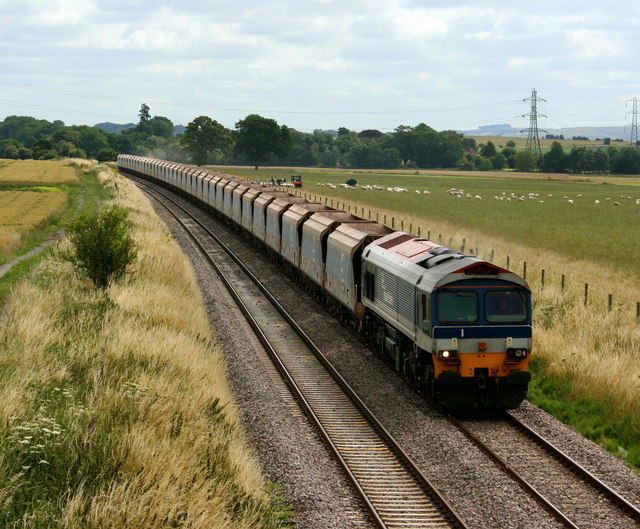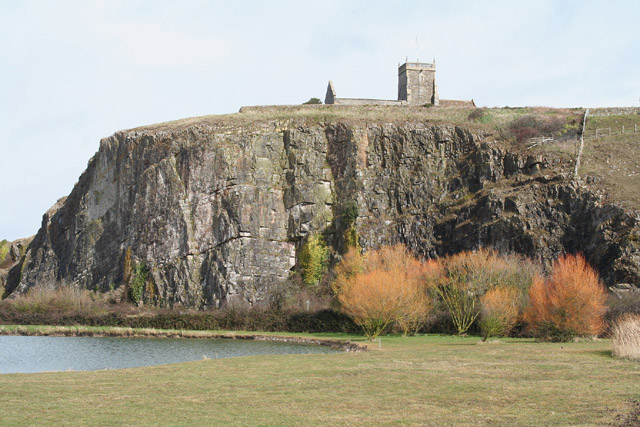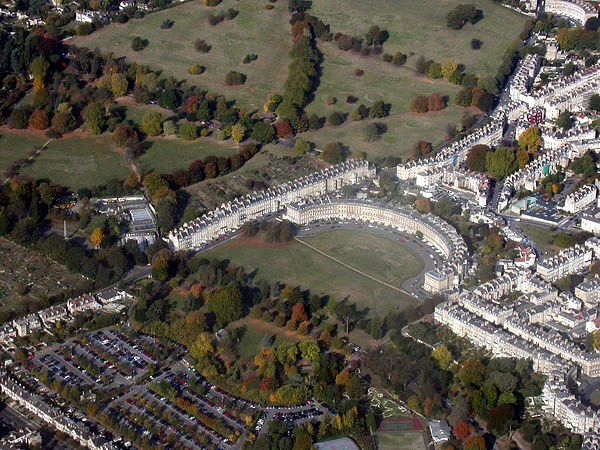|
Cranmore, Somerset
Cranmore is a village and civil parish east of Shepton Mallet, in the Mendip district of Somerset, England. The parish includes the hamlets of Waterlip, East Cranmore and Dean. History The name comes from ''Crane Mere'', the Lake of the Cranes. The parish of Cranmore was part of the hundred of Wells Forum. East Cranmore was part of the hundred of Frome. It is the base of the East Somerset Railway which plays host to a variety of preserved diesel and steam locomotives. It operates the line between Cranmore railway station, Cranmore West, Merryfield Lane Halt and Mendip Vale. The section between Cranmore and the mainline is used for heavy quarry traffic to the nearby Merehead Quarry. The quarry, which is also known as Torr Works, covers an area of some 200 hectares, including 60 hectares which have been landscaped to blend with the surrounding countryside. It was once operated by the Foster Yeoman Company, but now owned and operated by Aggregate Industries LTD, employing ov ... [...More Info...] [...Related Items...] OR: [Wikipedia] [Google] [Baidu] |
Church Of St Bartholomew, Cranmore
The Anglican Church of St Bartholomew in Cranmore, Somerset, England, dates from the 15th century and has been designated as a Grade I listed building. The chancel was rebuilt in 1848 in a perpendicular early English style. It has a three-stage embattled tower, supported by buttresses with corner pinnacles, tracery and gargoyles. There is a stone fan vault under the tower. The interior of the church includes wall monuments, particularly to the Strode family, and Chetham family of Southill House. There is a funeral bier dating from 1597. The church falls within the benefice of St Peter and St Paul, Shepton Mallet which also includes St Aldhelm, Doulting, which is part of the archdeaconry of Wells. See also * List of Grade I listed buildings in Mendip * List of towers in Somerset The Somerset towers, church towers built in the 14th to 16th centuries, have been described as among England's finest contributions to medieval art. The paragraphs and descriptions below descri ... [...More Info...] [...Related Items...] OR: [Wikipedia] [Google] [Baidu] |
Mendip Rail
Mendip Rail Ltd is an independent freight operating railway company in Great Britain. It is a joint venture composed of the rail-operation divisions of Aggregate Industries (formerly Foster Yeoman) and Hanson Aggregates (previously ARC). The company operates aggregate trains from the quarries of the Mendip Hills in South-West England, to London and South-East England. The Foster Yeoman quarries are at Torr Works and Dulcote Quarry, while Hanson has plants at Batts Combe Quarry and Whatley Quarry. The company operates four Class 59/0 diesel locomotives owned by Aggregate Industries and four Class 59/1 locomotives owned by Hanson. In addition, two SW1001 Switchers are owned and operated at Whatley and Merehead quarries. It owns Merehead Traction Maintenance Depot (Merehead TMD) where the eight locomotives are allocated. They can also be seen at Hither Green TMD or Eastleigh Works where they receive heavy maintenance. Foster Yeoman Foster Yeoman purchased its own fleet of 14 ... [...More Info...] [...Related Items...] OR: [Wikipedia] [Google] [Baidu] |
Local Government Act 1972
The Local Government Act 1972 (c. 70) is an Act of the Parliament of the United Kingdom that reformed local government in England and Wales on 1 April 1974. It was one of the most significant Acts of Parliament to be passed by the Heath Government of 1970–74. Its pattern of two-tier metropolitan and non-metropolitan county and district councils remains in use today in large parts of England, although the metropolitan county councils were abolished in 1986, and both county and district councils have been replaced with unitary authorities in many areas since the 1990s. In Wales, too, the Act established a similar pattern of counties and districts, but these have since been entirely replaced with a system of unitary authorities. Elections were held to the new authorities in 1973, and they acted as "shadow authorities" until the handover date. Elections to county councils were held on 12 April, for metropolitan and Welsh districts on 10 May, and for non-metropolitan distri ... [...More Info...] [...Related Items...] OR: [Wikipedia] [Google] [Baidu] |
Non-metropolitan District
Non-metropolitan districts, or colloquially "shire districts", are a type of local government district in England. As created, they are sub-divisions of non-metropolitan counties (colloquially ''shire counties'') in a two-tier arrangement. Non-metropolitan districts with borough status are known as boroughs, able to appoint a mayor and refer to itself as a borough council. Non-metropolitan districts Non-metropolitan districts are subdivisions of English non-metropolitan counties which have a two-tier structure of local government. Most non-metropolitan counties have a county council and several districts, each with a borough or district council. In these cases local government functions are divided between county and district councils, to the level where they can be practised most efficiently: *Borough/district councils are responsible for local planning and building control, local roads, council housing, environmental health, markets and fairs, refuse collection and recyclin ... [...More Info...] [...Related Items...] OR: [Wikipedia] [Google] [Baidu] |
Neighbourhood Watch (UK)
Neighbourhood Watch in the United Kingdom is the largest voluntary crime prevention movement covering England and Wales with upwards of 2.3 million household members. The charity brings neighbors together to create strong, friendly and active communities in which crime can be tackled. Neighbourhood Watch Network is the umbrella organization supported by the Home Office to support Neighbourhood Watch groups and individuals across England and Wales. Neighbourhood Watch groups work in partnership with the police, corporate companies with aligned values, voluntary organizations and individuals who want to improve their communities. Neighbourhood Watch aims to help people protect themselves and their properties and to reduce the fear of crime by means of improved home security, greater vigilance, accurate reporting of suspicious incidents and fostering a community spirit as well as tackling new forms of crime such as cybercrime. History In 1964, 28-year-old Kitty Genovese was stabb ... [...More Info...] [...Related Items...] OR: [Wikipedia] [Google] [Baidu] |
Parish Councils Of England
Parish councils are civil local authorities found in England which are the lowest tier of local government. They are elected corporate bodies, with variable tax raising powers, and they carry out beneficial public activities in geographical areas known as civil parishes. There are about 9,000 parish and town councils in England, and over 16 million people live in communities served by them. Parish councils may be known by different styles, they may resolve to call themselves a town council, village council, community council, neighbourhood council, or if the parish has city status, it may call itself a city council. However their powers and duties are the same whatever name they carry.Local Government and Public Involvement in Health Act 2007 Parish councils receive the majority of their funding by levying a precept upon the council tax paid by the residents of the parish (or parishes) covered by the council. In 2021-22 the amount raised by precept was £616 million. Other fundi ... [...More Info...] [...Related Items...] OR: [Wikipedia] [Google] [Baidu] |
Mendip Way
The Mendip Way is an long-distance footpath across the Mendip Hills from Weston-super-Mare to Frome. It is divided into two sections. The West Mendip Way was opened in 1979 and starts at the Bristol Channel at Uphill Cliff. It climbs the Mendip escarpment affording views over the Somerset Levels. It then crosses the central Mendip plateau leading down to Cheddar Gorge and on to Wells. Most of the western section is within the Mendip Hills Area of Outstanding Natural Beauty. From there the East Mendip Way continues through Shepton Mallet to Frome. The Mendip Way connects with the Macmillan Way, Monarch's Way, and Samaritans Way South West. The western trailhead of the Limestone Link is within of the Mendip Way near Shipham. Route description The Mendip Way starts at the village of Uphill on the southern outskirt of Weston-super-Mare. The route skirts Uphill Cliff, upon which the remains of a windmill and a Norman church are located, then crossing over the Bristol to ... [...More Info...] [...Related Items...] OR: [Wikipedia] [Google] [Baidu] |
John Moore Paget
John is a common English name and surname: * John (given name) * John (surname) John may also refer to: New Testament Works * Gospel of John, a title often shortened to John * First Epistle of John, often shortened to 1 John * Second Epistle of John, often shortened to 2 John * Third Epistle of John, often shortened to 3 John People * John the Baptist (died c. AD 30), regarded as a prophet and the forerunner of Jesus Christ * John the Apostle (lived c. AD 30), one of the twelve apostles of Jesus * John the Evangelist, assigned author of the Fourth Gospel, once identified with the Apostle * John of Patmos, also known as John the Divine or John the Revelator, the author of the Book of Revelation, once identified with the Apostle * John the Presbyter, a figure either identified with or distinguished from the Apostle, the Evangelist and John of Patmos Other people with the given name Religious figures * John, father of Andrew the Apostle and Saint Peter * Pope John ... [...More Info...] [...Related Items...] OR: [Wikipedia] [Google] [Baidu] |
Thomas Henry Wyatt
Thomas Henry Wyatt (9 May 1807 – 5 August 1880) was an Anglo-Irish architect. He had a prolific and distinguished career, being elected President of the Royal Institute of British Architects 1870–73 and being awarded its Royal Gold Medal for Architecture in 1873. His reputation during his lifetime was largely as a safe establishment figure, and critical assessment has been less favourable more recently, particularly in comparison with his younger brother, the better known Matthew Digby Wyatt. __TOC__ Personal and family life Wyatt was born at Lough-Glin House, County Roscommon. His father was Matthew Wyatt (1773–1831), a barrister and police magistrate for Roscommon and Lambeth. Wyatt is presumed to have moved to Lambeth with his father in 1825 and then initially embarked on a career as a merchant sailing to the Mediterranean, particularly Malta. He married his first cousin Arabella Montagu Wyatt (1807–1875). She was the second daughter of his uncle Arthur who was an agen ... [...More Info...] [...Related Items...] OR: [Wikipedia] [Google] [Baidu] |
Cranmore Tower
The Cranmore Tower is a tall 19th century folly in the parish of Cranmore, Somerset, England. The site is above sea level, and is the highest point on the Mendip Way. The tower was built in 1862-1864, by Thomas Henry Wyatt for John Moore Paget of Cranmore Hall (now part of All Hallows Preparatory School). There is a viewing area at the top with pair of semi-circular headed openings to each face with a restored iron-railed balcony beneath each pair. A similar balcony just over halfway up is continued right round the tower. It has been designated by English Heritage as a grade II listed building. In World War II it was used as a lookout tower by the Home Guard and the Royal Corps of Signals. By 1984 the tower had fallen into disrepair and was sold to Donald Beaton who undertook repairs. During the course of the repairs the remains of a Roman fort with a hoard of coins was discovered adjacent to the tower. In 1988 it was sold again, this time to Nick Ridge who opened it to th ... [...More Info...] [...Related Items...] OR: [Wikipedia] [Google] [Baidu] |
Victorian Era
In the history of the United Kingdom and the British Empire, the Victorian era was the period of Queen Victoria's reign, from 20 June 1837 until her death on 22 January 1901. The era followed the Georgian period and preceded the Edwardian period, and its later half overlaps with the first part of the '' Belle Époque'' era of Continental Europe. There was a strong religious drive for higher moral standards led by the nonconformist churches, such as the Methodists and the evangelical wing of the established Church of England. Ideologically, the Victorian era witnessed resistance to the rationalism that defined the Georgian period, and an increasing turn towards romanticism and even mysticism in religion, social values, and arts. This era saw a staggering amount of technological innovations that proved key to Britain's power and prosperity. Doctors started moving away from tradition and mysticism towards a science-based approach; medicine advanced thanks to the adoption ... [...More Info...] [...Related Items...] OR: [Wikipedia] [Google] [Baidu] |
John Wood, The Younger
John Wood, the Younger (25 February 1728 – 18 June 1782) was an English architect, working principally in the city of Bath, Somerset. He was the son of the architect John Wood, the Elder. His designs were highly influential during the 18th century and the Royal Crescent is considered to be one of the best examples of Georgian Neo-Classical architecture in Britain. Biography John Wood was born in 1728, the year his father moved to Bath, and was baptised in Bath Abbey. He was trained by his father and as a young man worked on several of his father's projects such as Liverpool Town Hall. In either 1752 or early 1753 he married Elizabeth Brock. They had two sons together and at least eight daughters. Wood died at Eagle House, Batheaston (his home in later years) on 16 June 1781 and was buried beside his father in the chancel at St Mary's Church, Swainswick. He was deeply in debt, partly due to financial conditions relating to his father's earlier building speculati ... [...More Info...] [...Related Items...] OR: [Wikipedia] [Google] [Baidu] |





